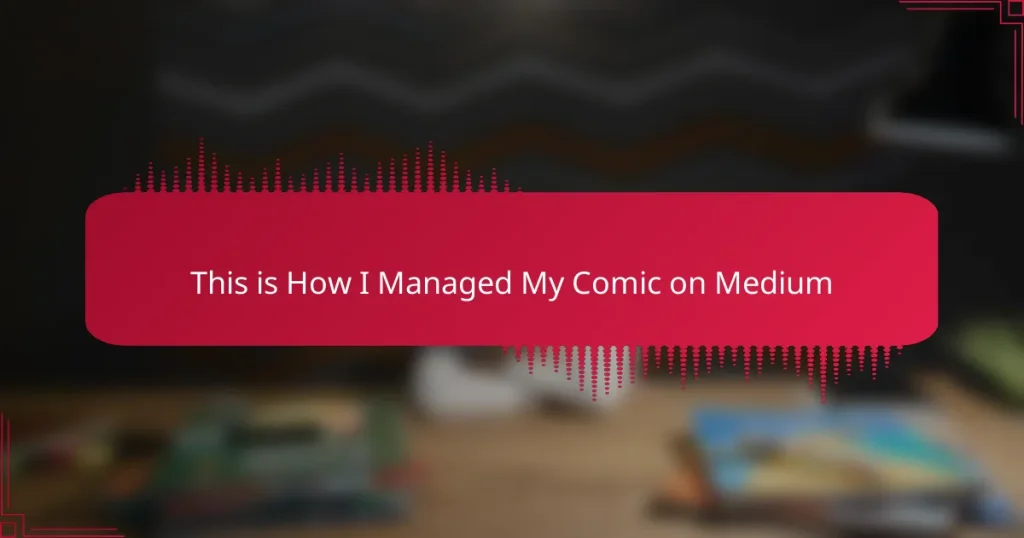Key takeaways
- Creating a comic book involves balancing compelling storytelling with engaging visuals, enhanced by feedback and revisions.
- Utilizing the right tools, both digital and physical, supports creativity and helps develop a unique artistic style.
- Building a community through collaboration and engagement with readers enhances the creative process and fosters support.
- Consistency in publishing and strategic distribution on platforms like Medium helps in maintaining audience connection and growth.
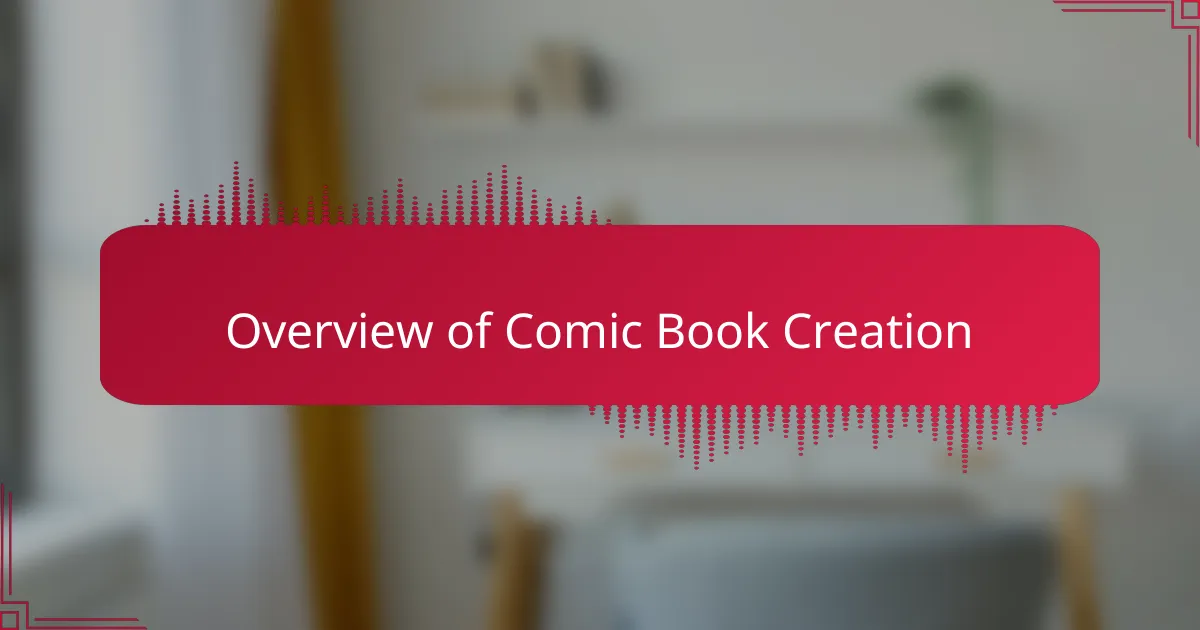
Overview of Comic Book Creation
Creating a comic book is an exhilarating journey that combines creativity, storytelling, and art. From the moment I first sketched my characters, I felt a spark of inspiration that drove me to bring them to life. It requires a delicate balance of crafting a compelling narrative while ensuring the visuals enhance the story.
I remember facing my first serious setback when I realized my plot wasn’t resonating as I had hoped. It taught me the importance of feedback and iteration in the process. Each panel I designed was not just a drawing but a piece of my personal story and emotions poured onto the page.
Aligning art and writing can be challenging, but it’s incredibly rewarding when you get it right. I often reflect on how these elements must work in harmony to truly engage the reader, making each struggle worthwhile.
| Aspect | Description |
|---|---|
| Story Development | Crafting a compelling narrative that captivates readers. |
| Character Design | Creating relatable characters with depth, reflecting emotions and arcs. |
| Art Style | Choosing an art style that complements the story and appeals to the audience. |
| Feedback and Revisions | Iterating based on reader feedback to enhance the final product. |
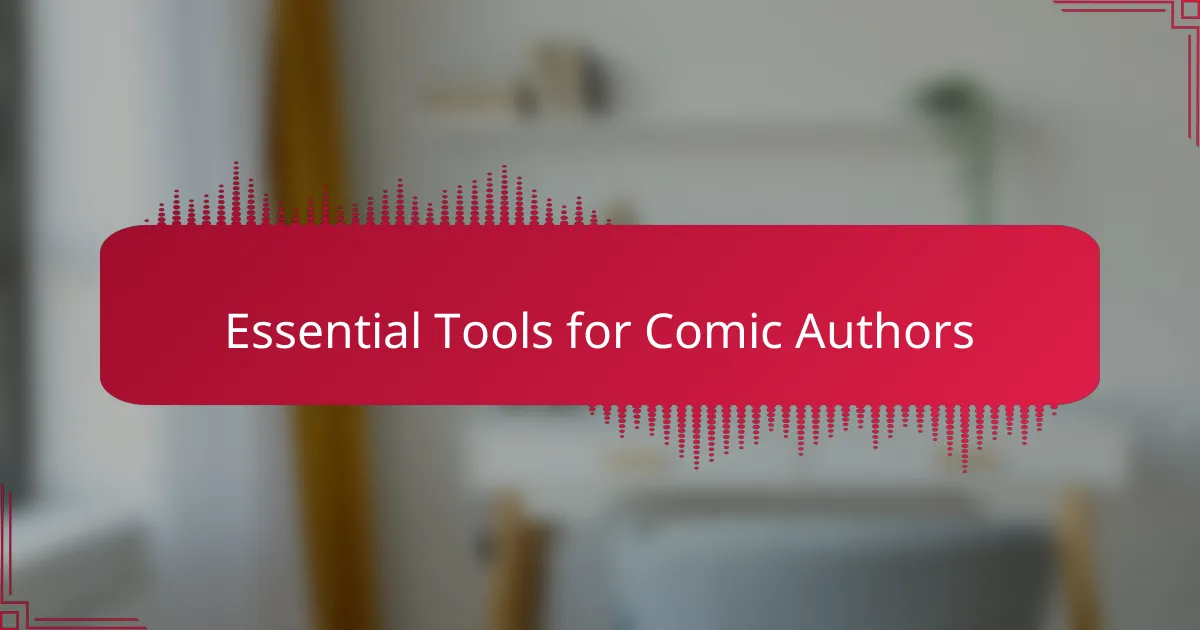
Essential Tools for Comic Authors
When it comes to creating comics, having the right tools can make all the difference. I’ve always relied on software like Clip Studio Paint for my illustrations. The flexibility it offers for both drawing and coloring has been a game changer, allowing me to bring my characters to life with precision and ease, which is crucial for a visually-driven medium like comic books.
Beyond digital tools, physical supplies can also spark creativity. I still remember the feel of pencil on paper when I’m starting out with sketches. There’s something incredibly satisfying about using quality sketch pads and fine liners for that initial draft. It’s like a tangible connection to my ideas; I highly recommend getting what feels right for you to cultivate your unique style.
Let’s not overlook the power of community platforms and social media. Engaging with other comic creators through sites like Twitter or Discord has opened doors for collaboration and feedback. How can we grow if we don’t share our work and connect with others? I’ve found that feedback from peers is invaluable in refining my stories and art, pushing me to explore new creative avenues.
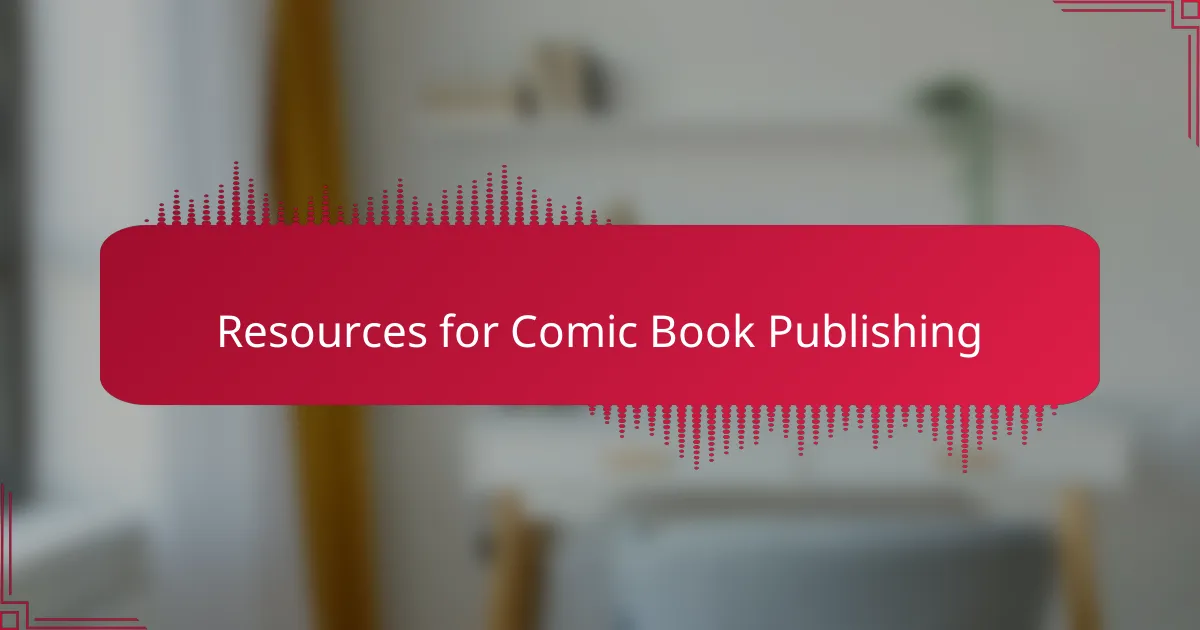
Resources for Comic Book Publishing
Publishing a comic can feel overwhelming, but I’ve found that utilizing the right resources makes a significant difference. For instance, when I started my journey on Medium, I discovered platforms like Canva, which not only helped me design eye-catching layouts but also made the process enjoyable. Seeing my ideas come to life visually was incredibly satisfying and motivated me to keep creating.
Another valuable resource I discovered is various online communities dedicated to comic book authors. Connecting with fellow creators not only provided feedback but also fostered friendships that turned into collaborations. Participating in these groups has enriched my experience and expanded my perspective as an artist.
Here are some essential resources I recommend for comic book publishing:
- Canva: Great for designing layouts and covers.
- Clip Studio Paint: A powerful tool for drawing and inking.
- Webtoon and Tapas: Platforms to publish and reach broader audiences.
- Reddit: Subreddits like r/comics and r/comicbookresources for feedback and advice.
- Procreate: An excellent app for digital illustration on the iPad.
- Local Comic Cons: Great for networking, finding resources, and showcasing your work.
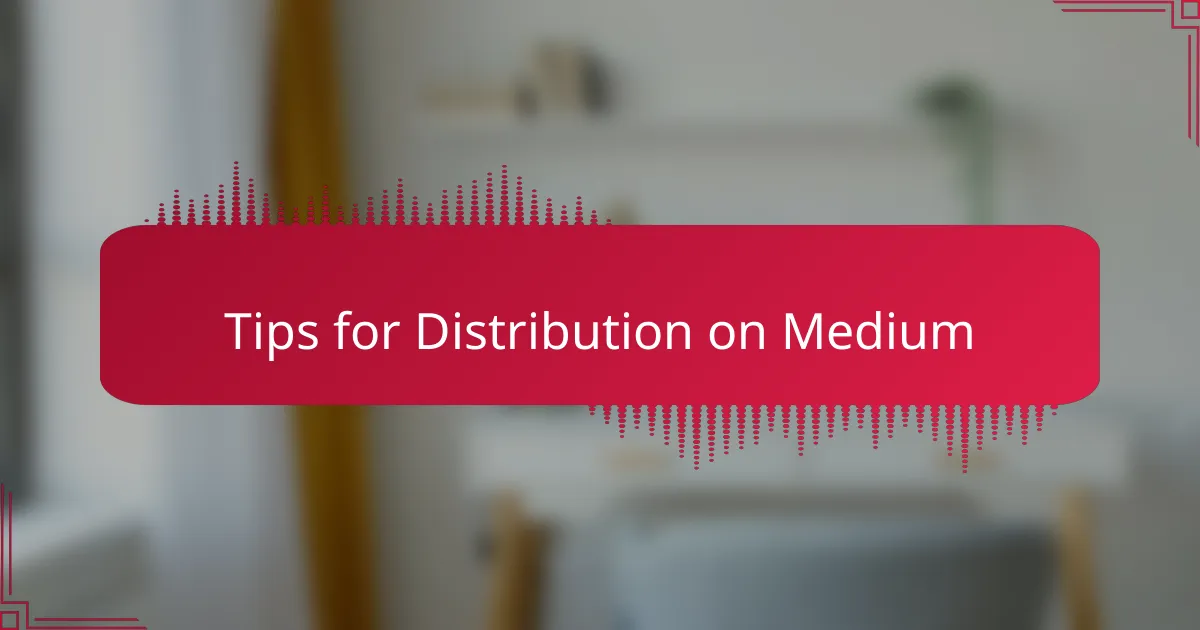
Tips for Distribution on Medium
When it comes to distribution on Medium, I’ve found that understanding keywords makes a world of difference. By choosing the right tags for your comic, you ensure that your work reaches the audience that’s already interested in similar content. It’s intriguing how a few strategic choices can increase visibility significantly, almost like speaking a language your readers understand.
Engagement is equally important. I remember the thrill of interacting with readers through comments. It’s not just about getting your comic out there; it’s about building a community. I often respond to feedback, not only to show appreciation but also to encourage more dialogue. This connection can turn casual readers into loyal fans who eagerly await your next release.
Lastly, cross-promotion can be a game-changer. Sharing snippets of my work on other platforms like Twitter or Instagram has driven traffic to my Medium page. Each time I share an image or quote from my comic, I’m not just promoting but inviting people into my creative world. Have you thought about how networking can amplify your reach? It’s a rewarding cycle of creativity and connection!
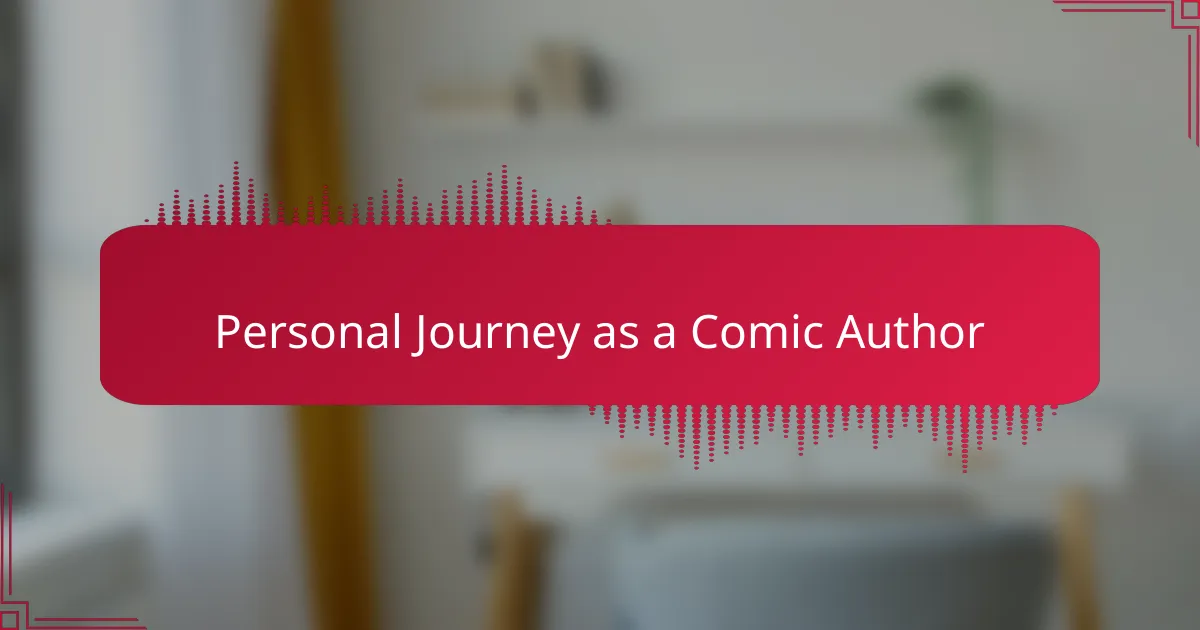
Personal Journey as a Comic Author
As I embarked on my journey as a comic author on Medium, I quickly realized the importance of connecting with my audience. I poured my heart into every panel, hoping to convey not just a story but emotions that resonated with readers. There were days filled with self-doubt, wondering if my creations would find their place in the vast online world. But each comment of encouragement reminded me why I started.
One of the most fulfilling aspects was collaborating with other creators. Sharing tips and brainstorming storylines not only enriched my work but fostered a sense of community. I discovered that success wasn’t purely measured by numbers but rather in the relationships built along the way.
Here’s a look at my journey compared to some common milestones for comic authors on platforms like Medium:
| Milestone | My Journey |
|---|---|
| First Comic Published | Felt a mix of excitement and fear |
| First Reader Feedback | Overwhelmed with joy and relief |
| Collaboration with Other Creators | Enhanced creativity and motivation |
| Building a Community | Became a lifeline for encouragement |
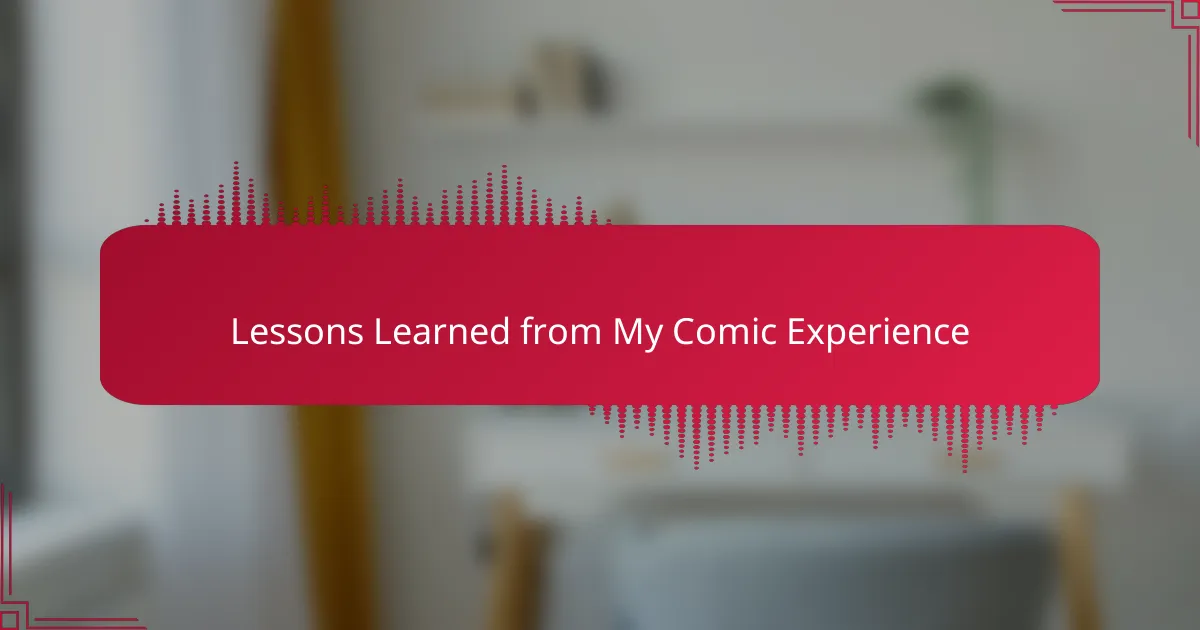
Lessons Learned from My Comic Experience
The first lesson learned from my comic experience was the immense value of feedback. Early on, I was hesitant to share my work, fearing criticism. However, when I finally opened up to my peers, their insights transformed my narrative. It dawned on me that constructive criticism isn’t a setback but a stepping stone to growth. Have you ever felt held back by fear? I certainly did, but taking that plunge was crucial.
Collaboration became another key takeaway from my journey. When I teamed up with fellow creators, we exchanged ideas that sparked creativity I hadn’t tapped into before. There’s a unique energy that comes from brainstorming together, and it often leads to unexpected and exciting directions for a project. I’ve realized that while solo work can be fulfilling, community involvement can amplify both creativity and motivation. Have you thought about the power of collaboration in your work?
Lastly, I discovered the significance of consistency. Maintaining a regular publishing schedule not only kept me disciplined but also engaged my audience. It was exhilarating watching my follower count grow as they anticipated my next release. There were moments of doubt, but sticking to my schedule cultivated a stronger connection with my readers. I often found myself asking, “How can I maintain this momentum?” Ultimately, balancing passion with commitment has been key to my ongoing journey as a comic author.
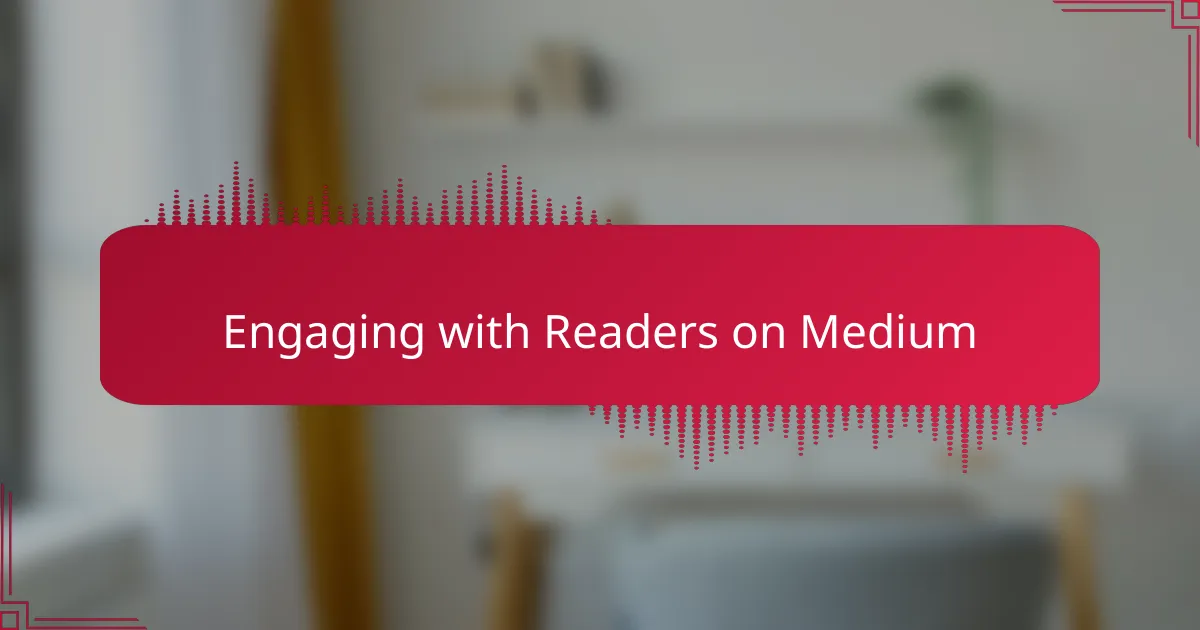
Engaging with Readers on Medium
Engaging with readers on Medium has been a rewarding experience for me. I remember the first time a reader left a thoughtful comment on one of my comic strips; it was exhilarating to know that my work resonated with someone. I believe that responding to comments and starting conversations is essential. By sharing insights about my creative process, I create a connection that turns casual readers into dedicated fans.
I’ve also found that sharing behind-the-scenes content, like rough sketches and brainstorming sessions, really captures interest. This openness invites readers into my creative world, making them feel like part of the journey. It’s amazing how such simple gestures can transform the relationship between the creator and the audience, ultimately building a supportive community.
Here’s a comparison of my engagement strategies and their effects:
| Engagement Strategy | Impact |
|---|---|
| Responding to Comments | Increases reader loyalty and encourages more feedback |
| Sharing Behind-the-Scenes Content | Creates a personal connection; readers feel involved in the creative process |
| Asking for Reader Input | Invites active participation and can inspire future comic ideas |
